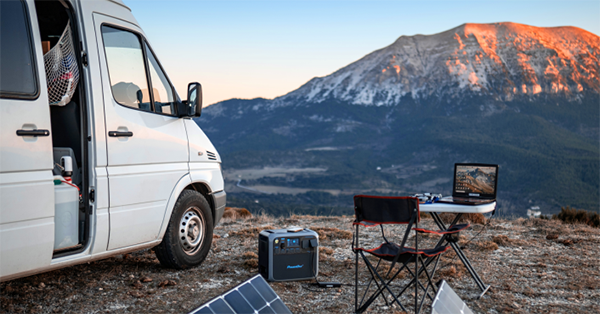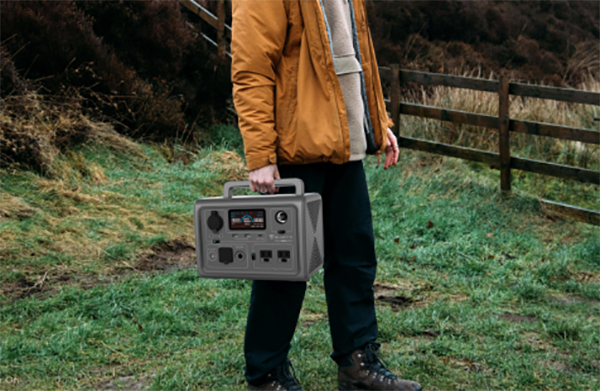
For self-driving travel, strong power protection is also essential. Camping lighting, cooking, and mobile phone charging all require electricity. A suitable 220V outdoor power supply has become an essential standard baby for self-driving travel. How to choose a satisfactory 220V outdoor power supply? Five questions: What kind of battery? How much power can it bring? How long can a 500-watt power appliance work? What kind of casing is it made of? What output ports are there? The first question: what kind of battery? This is the nature of the battery. The current outdoor power supply generally uses lithium batteries of ternary materials, and mainly 18650 models. The main features are: light weight, small size, long cycle life and stable performance. The ternary material lithium battery is still the dominant in the lithium battery industry. The world’s mainstream companies such as Panasonic, Samsung, LG, Ningde Times, Lishen, BAK, etc., all mainly promote batteries of ternary materials. Many consumers are worried about the safety of ternary materials. If you look at it from a statistical point of view, ternary material lithium batteries are still the most stable and reliable batteries in the world. Because ternary material lithium batteries are the most widely used and used in the largest number, from hearing aids to mobile phones, from smart bracelets to electric vehicles, ternary material lithium batteries have become an indispensable component. Due to the participation of many enterprises and huge technological investment, the capacity and safety of ternary material lithium batteries have been greatly improved in recent years. Lead-acid batteries are too heavy, have a short lifespan, and are seriously polluted by production and recycling. There are few manufacturers who use them for outdoor power supplies. . Lithium iron phosphate batteries are also relatively bulky. The biggest problem of iron phosphate batteries is that the overall industrial supporting system is not mature. Although theoretically safer than ternary materials, the quality and price are not ideal. There are not many battery manufacturers that actually produce lithium iron phosphate in the world, only BYD. Do better. Second question, how long can a 500-watt rice cooker continue to work? This is the capacity issue. Now the nominal capacity is different, the standard is how many watt hours, that is, how many WH. There is also a number of 10,000 mAh, but this statement is very one-sided. The capacity of the battery is: average discharge voltage × discharge current × time. 1 kWh = 1000 watt hours = 1000WH. When purchasing, you must confirm this issue with the seller.

Generally used as a 220-volt outdoor power supply, if you want to withstand it outdoors, the capacity is 500WH~1000WH. The larger the capacity, the more bulky it is, which is not conducive to portability. Since it is a problem of capacity, it is necessary to involve the time of using electrical appliances. You can ask the seller like this. Take an outdoor power supply with a capacity of 1000WH as an example. If a 500-watt electrical appliance can work continuously for 100-110 minutes, then the capacity is qualified. Because after all the boost is raised to 220 volts, there must be a certain amount of heat loss. Taking a 500-watt electric pressure cooker as an example, it can make 5 meals of rice. The third question is, how much power can I bring? This is the AC output power of the outdoor power supply, which involves the power and waveform of the inverter. Now there are too many routines for individual sellers, and they do not claim to be actually continuous power, which makes it difficult for consumers. Therefore, when purchasing, be sure to ask the seller clearly how much power it can bring. There are generally two types of inverters for outdoor power supplies, namely square wave and sine wave. The square wave can drive resistance electrical appliances with full power such as rice cookers, electric pressure cookers, light bulbs, LED lights, such as outdoor power supplies with a nominal output power of 500 watts. Light bulbs etc. However, if there are inductive electrical appliances, some discounts are required. If the output is 500 watts, it can only drive chargers and electric fans within 200 watts. In contrast, the waveforms of the sine wave outdoor power supply and the commercial power supply are exactly the same, which is a sine curve. An outdoor power supply with a nominal 500 watts should drive all appliances of 500 watts and below. Hand drills, electric fans, and some electrical appliances are all inductive appliances. One of the biggest advantages of sine waves is that there is no noise when using speakers. But there is also a small disadvantage that the heat loss is slightly larger, that is, the utilization efficiency is lower than that of the square wave. The main points of anti-flickering, the maximum power marked on the Internet, the instantaneous power has no meaning to the average consumer, what you need is the continuous output power. Fourth question, what kind of shell? This may seem unimportant, but it is actually very important. Outdoor power is different from general electrical appliances. The low voltage DC 12 volts need to be boosted to 220 volts AC. In this process, about 10% of the heat energy will be wasted. In addition to using the fan to dissipate heat, if the aluminum alloy material is used, more heat can be dissipated to ensure the safety of the lithium battery. Outdoor power supplies are generally used outdoors or in vehicles. It is inevitable that they will be bumped, dropped, squeezed, and even bumped and rolled in extreme cases. In order to protect the lithium battery cells inside, there must be a sturdy casing. Static electricity will inevitably be generated during travel, and static electricity will pose a fatal threat to the circuit in the outdoor power supply, and the metal casing is naturally static. To sum up, the heat dissipation, sturdiness, anti-static and portability of the aluminum alloy shell make it the most ideal choice. The fifth question is what output ports are there. A multifunctional outdoor power supply should have the following output ports: 220V AC output port, this is the most important. In addition, it is best to have a 12V lighting output port, a 5VUSB mobile phone charging port, and a 12V high-current emergency start port. Considering the outdoor environmental load, if the output terminal can be plated with gold or silver, it will be more corrosion-resistant.






